Best Practices for Visualizing Expectations and Outcomes
The success of an Expectations and Outcomes Hub (EOH) relies heavily on its ability to present data in a clear, actionable, and visually compelling manner. Dashboards and reports must communicate key insights about project expectations, progress, and outcomes to stakeholders efficiently. This document outlines the best practices and prescriptive strategies for visualizing expectations and outcomes, ensuring that decision-makers and teams can derive maximum value from the EOH.
Principles of Effective Visualization
- Clarity: Avoid clutter and ensure visual elements are easy to interpret.
- Relevance: Focus on metrics and data points that matter most to stakeholders.
- Actionability: Present information that prompts decisions or actions.
- Consistency: Use uniform colors, styles, and layouts across dashboards.
- Interactivity: Enable users to drill down into data for deeper insights.
Key Components of EOH Dashboards
1. Expectations Overview
- Purpose: Display the agreed-upon goals and deliverables for the project.
- Best Visualizations:
- Gantt Charts: For visualizing timelines and dependencies.
- Summary Tables: To list key milestones, due dates, and status.
- Metrics to Include:
- Total milestones
- Percentage of milestones on track, delayed, or completed
- Key upcoming deadlines
2. Progress Tracking
- Purpose: Show real-time updates on project performance.
- Best Visualizations:
- Bar Charts: For task completion rates.
- Line Charts: To depict trends over time, such as weekly progress.
- Kanban Views: For task-specific updates.
- Metrics to Include:
- Percentage of tasks completed
- Average time to complete tasks
- Current status of critical tasks
3. Outcome Highlights
- Purpose: Summarize delivered outcomes and their alignment with expectations.
- Best Visualizations:
- Pie Charts: To illustrate proportions of completed, ongoing, and pending deliverables.
- Heatmaps: For tracking areas with high or low activity.
- Metrics to Include:
- Number of deliverables completed
- Deliverable quality scores (if available)
- Feedback ratings from stakeholders
4. Risk and Issue Monitoring
- Purpose: Identify potential bottlenecks and issues.
- Best Visualizations:
- Bubble Charts: For risk prioritization based on likelihood and impact.
- Color-Coded Tables: To highlight high-priority risks or overdue tasks.
- Metrics to Include:
- Total risks identified
- Number of resolved vs. unresolved issues
- Risk severity distribution
5. Client and Team Feedback
- Purpose: Capture stakeholder sentiment and satisfaction.
- Best Visualizations:
- Word Clouds: To summarize open-ended feedback.
- Bar Charts: For quantitative survey results.
- Metrics to Include:
- Average feedback score
- Positive, neutral, and negative sentiment proportions
- Frequency of recurring feedback themes
6. Financial Metrics (Optional)
- Purpose: Show the financial impact of the project if applicable.
- Best Visualizations:
- Waterfall Charts: To display budget allocation and expenditure.
- Line Charts: For tracking cost trends over time.
- Metrics to Include:
- Budget vs. actual spend
- Cost per milestone or deliverable
Prescriptive Visualization Workflow
Step 1: Define Goals and Stakeholders
- Identify the purpose of the dashboard or report (e.g., progress tracking, risk monitoring).
- Determine the primary audience and their specific information needs.
Step 2: Choose the Right Tools
- Recommended Tools:
- Power BI: For highly interactive and detailed dashboards.
- Tableau: For visually compelling and user-friendly dashboards.
- Google Data Studio: For lightweight and easily shareable dashboards.
surveilrDashboards: For seamless integration with the EOH ecosystem.
Step 3: Organize Data Inputs
- Aggregate data from relevant sources (e.g., JIRA, GitHub, CRM systems).
- Use
surveilrCode Notebook Cells to automate data extraction and preprocessing. - Ensure data is clean, accurate, and updated in real-time.
Step 4: Build the Visualizations
- Match visualizations to the type of data and insights required.
- Use prebuilt templates or custom configurations in your visualization tool.
- Validate that each visualization supports decision-making.
Step 5: Test and Iterate
- Share the initial version with key stakeholders for feedback.
- Refine based on usability and relevance.
- Schedule periodic reviews to ensure the dashboard remains aligned with project needs.
Step 6: Automate Updates
- Use cron jobs or automation tools to refresh dashboards regularly.
- Configure
surveilrto handle data synchronization and visualization updates.
Advanced Strategies for Visualization
1. Predictive Analytics Integration
- Use AI to forecast trends, such as task completion rates or risk likelihood.
- Display predictions alongside current metrics for proactive decision-making.
2. Custom Alerts
- Set up triggers for anomalies or significant changes (e.g., missed deadlines).
- Send notifications to stakeholders via email or messaging platforms.
3. User-Specific Views
- Create role-based dashboards tailored to different stakeholder groups (e.g., clients, internal teams).
- Use access controls to restrict or customize data visibility.
4. Storytelling Dashboards
- Incorporate narrative elements to guide users through key insights.
- Combine text, visuals, and annotations to highlight critical findings.
Common Pitfalls to Avoid
- Overloading Dashboards: Too many metrics can overwhelm users.
- Using Misleading Visuals: Ensure charts and graphs are accurate and unbiased.
- Neglecting Accessibility: Design dashboards to be usable by all stakeholders, including those with disabilities.
- Ignoring Feedback: Regularly update dashboards based on user input and evolving project needs.
Effective visualization of expectations and outcomes is essential for maximizing the value of an EOH. By following the outlined strategies and leveraging modern tools, organizations can create dashboards and reports that empower stakeholders, improve decision-making, and drive project success. Incorporating automation through surveilr and predictive analytics will further enhance the impact of these visualizations, ensuring they remain relevant and actionable in dynamic project environments.

